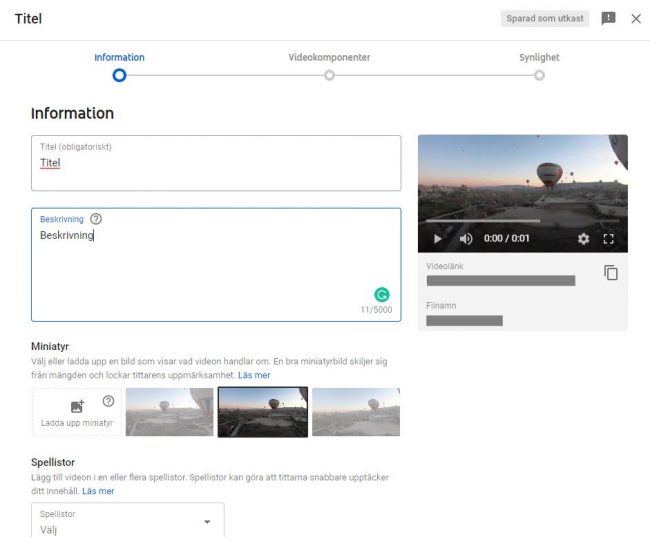
Search engines are getting better and smarter at interpreting and understanding content. However, you still need to give them a little help to fully grasp what you’ve produced. In this article, we’ll explain how you can increase the visibility of your YouTube videos while also helping the search engine understand what the content is about—using tags.
What are YouTube tags?
YouTube tags can most simply be explained as the tags that describe a video’s context to YouTube. Tags are also used to categorize and make videos easier to find for users who are looking for a specific type of video.
It’s important to use tags for your videos, as this is valuable information YouTube needs to determine what the video in question is about. Studies have also shown that tags can have some impact on ranking positions, according to a 2018 study by Briggsby. However, this study found that only one-third of top-ranking results on YouTube use tags. According to the study, this may suggest that YouTube tags don’t have as large an effect on rankings as, for example, titles and descriptions do, but that they still matter. Backlinko confirmed this in its 2019 study on YouTube ranking factors.
How do you tag your YouTube videos?
How you tag your videos depends on whether it’s new uploads or if you want to update tags on videos already uploaded.
How to tag new videos
- First, log in to YouTube Studio
- Then click “Upload videos,” which is found in the center of the welcome view or at the top right corner under the “Create” icon

- Click to upload your file
- Once this is done, you’ll arrive at the following view:

- Scroll down and click “More options”

How to update tags on your uploaded videos
Updating tags on already uploaded videos follows the same principle, but the navigation is a little different:
- Log in to YouTube Studio
- Select the “Videos” icon on the left-hand menu

- Click on the video you want to tag
- Find “More options” to access the “Tags” field as shown in the image above
How should you think about your YouTube tags?
As described earlier, YouTube tags can be used to help the search engine understand what the video in question is about. There are a few things you should keep in mind when choosing and tagging your videos on YouTube. Below we go through the best practices for implementing your tags.
Rank your tags by importance
Try to use your primary keyword as the first tag. YouTube places more weight on the first tag and the least weight on the last tag. Therefore, rank your tags in order of importance and relevance.
Look at similar video tags for inspiration
If you’re new to YouTube, the easiest way to find tags is to look at other, similar videos to see which tags they use. However, take this with a grain of salt, as there’s no guarantee other channels have done it correctly, but it can work well as inspiration. It’s then up to you and your judgment to use the tags that best describe your video’s content.
Use a keyword planner or other keyword tool
If you have no idea which keywords to use as tags, you can use Google’s Keyword Planner for inspiration. This doesn’t provide exact search volumes but can still give you ideas. If you want search volumes, Ubersuggest can help. This tool gives some insight into how many people search for certain terms on Google.
At the time of writing, there’s no good tool available to show search volumes specifically for YouTube.
Don’t use too many tags
Avoid using too many tags for your YouTube video. Overusing tags can confuse the search engine, especially if the tags mix too many broad keywords. YouTube allows up to 500 characters for tags, but it’s usually best not to exceed 200 characters. A maximum of 10 tags is often appropriate, but you’ll usually get a sense yourself when it’s too much. One tip here is to ask someone who hasn’t seen the video to guess what it’s about based on the tags.
Avoid so-called “Tag stuffing”
By using too many tags or tags that don’t match your video content, YouTube can penalize you. Like Google, YouTube doesn’t like when people try to manipulate the search results. To read more about YouTube’s guidelines for spam and other policies, we recommend the following video and article: https://support.google.com/youtube/answer/2801973?hl=en-GB
Focus on your viewers and have fun
Your main focus should always be on your viewers and what they expect to see on your channel. If you don’t have many subscribers, think about what your target audience would want. Don’t get hung up on making everything perfect from the start—you can always adjust and tweak most things later. The most important thing is that as an aspiring YouTuber, you have fun with your channel and your videos. For more tips on how to improve your visibility on YouTube, we’ve also written an article on YouTube SEO.
